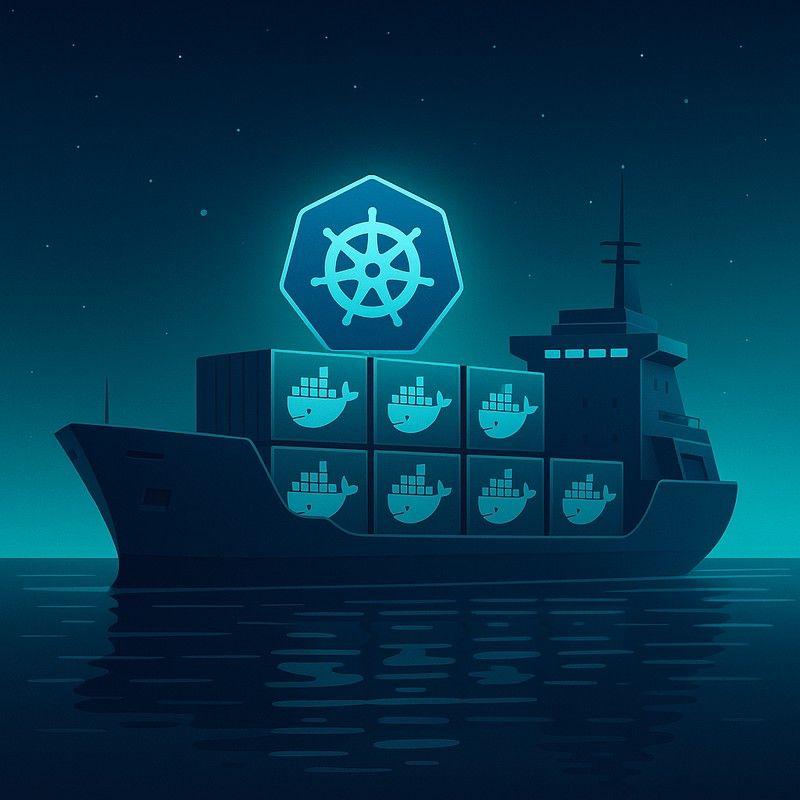- cloudfoundry
- kubernetes
The Ultimate Showdown: Kubernetes vs Cloud Foundry for Cloud Applications
Jan 23, 2025
-
Damian Szewczyk
-
10 minutes

When it comes to deploying and managing containerized applications in the cloud, two prominent platforms emerge: Cloud Foundry and Kubernetes. Each offers a unique approach to application deployment, management, and scalability, catering to different needs and complexities within the cloud-native landscape.
Kubernetes, an open-source container and services orchestration platform developed by Google and now maintained by the Cloud Native Computing Foundation, shines in its ability to automate the development, scaling, and management of containerized apps across various environments. It boasts features like container orchestration, automatic scaling, load balancing, self-healing, resource management, and service discovery and networking. This platform is highly extensible, supports declarative configuration and automation, and allows running multiple containers in a cluster to enable load balancing.
Cloud Foundry, on the other hand, is an open-source Platform as a Service (PaaS) that emphasizes developer productivity by abstracting underlying infrastructure complexities, thus simplifying app deployment and management. It provides a higher level of abstraction for cloud-native application deployment, understanding application dependencies, building the container, deploying it, scaling, and managing network routing. Cloud Foundry's architecture is designed to run workloads on any equipment, whether on-premise, public cloud, or VMs, offering flexibility in workload management.
The key distinctions between the two platforms are evident in their architecture, design philosophy, and operational complexity. Kubernetes is container-centric, offering a broad and diverse ecosystem with a flexible container orchestration platform that caters to a wide range of container runtimes and supports intricate deployment models. It requires more manual control and has a steeper learning curve, but it offers greater flexibility and customization options.
Cloud Foundry, with its application-centric architecture, aims to improve developer productivity by offering an opinionated set of components designed to work together seamlessly. It uses built-in container runtimes to run apps and simplifies the deployment process, allowing developers to focus more on coding rather than infrastructure management. Cloud Foundry offers automatic scaling based on workloads and integrates routing within the platform, providing a simplified experience and standardization across deployments.
In choosing between Kubernetes and Cloud Foundry, factors such as architectural needs, purpose, flexibility, learning curve, community support, and use cases play critical roles. Kubernetes is better suited for scenarios requiring fine-grained control over containers and infrastructure, whereas Cloud Foundry is ideal for rapid application development and deployment in environments where developer productivity and ease of use are paramount.
Ultimately, the choice between Cloud Foundry and Kubernetes depends on the specific requirements of your project, the size and expertise of your team, and the desired balance between infrastructure management and developer efficiency. Some organizations might even find value in leveraging both platforms to capitalize on the strengths of each, such as deploying Cloud Foundry on Kubernetes to enjoy the benefits of a simplified PaaS experience while retaining the flexibility of Kubernetes for container orchestration
Kubernetes, often abbreviated as K8s, has emerged as the leading open-source platform for container orchestration. It was originally developed by Google and is now maintained by the Cloud Native Computing Foundation (CNCF). Kubernetes aims to automate the deployment, scaling, and operations of application containers across clusters of hosts, providing a robust framework for managing containerized applications in a clustered environment.
Understanding Kubernetes Architecture
At the heart of Kubernetes' architecture is the cluster, which is composed of at least one master and multiple worker nodes. The master node is responsible for managing the state of the cluster, including scheduling applications, maintaining applications' desired states, scaling applications, and rolling out new updates. Worker nodes are the machines that run the applications using containers. Key components include the Pod (the smallest deployable units created and managed by Kubernetes), Service (an abstract way to expose an application running on a set of Pods as a network service), and Deployment (which manages the deployment and scaling of a set of Pods, and provides updates to applications).
Benefits of Using Kubernetes
The scalability and flexibility of Kubernetes are among its most significant benefits. It supports automatic bin packing, self-healing (automatically replaces and reschedules failed containers), horizontal scaling, and load balancing. Kubernetes also offers a rich set of features for managing services, which makes it possible to deploy applications quickly and predictably, scale applications on the fly, roll out new features seamlessly, and optimize the use of hardware by using only the resources needed.
Kubernetes vs Other Container Orchestration Tools
When compared to other container orchestration tools, such as Docker Swarm and Apache Mesos, Kubernetes stands out for its high degree of flexibility, scalability, and community support. While Docker Swarm is praised for its simplicity and ease of setup, Kubernetes offers more comprehensive features for complex, distributed systems at scale. Apache Mesos is known for its ability to run other frameworks on top of it, making it suitable for a wider variety of workloads, but Kubernetes excels in container orchestration and management, making it the go-to for containerized applications.
Managing Applications with Kubernetes
Kubernetes simplifies application deployment and management through declarative configuration and automation. It allows developers to declare their applications' requirements, resources, and policies in a configuration file, which Kubernetes then uses to automatically manage the application's lifecycle. This includes rolling updates, rollback to previous versions, and scaling based on traffic fluctuations. Kubernetes' ecosystem also includes tools and services that extend its capabilities, making it easier to deploy, monitor, and manage applications and services across a wide range of environments.
In summary, Kubernetes provides a powerful, extensible, and widely adopted platform for managing containerized applications. Its comprehensive set of features for automating deployment, scaling, and operations of application containers across clusters has made it the standard for container orchestration, offering significant advantages over traditional deployment and management methods.
Cloud Foundry is an open-source Platform as a Service (PaaS) that provides a seamless experience for deploying, managing, and scaling applications. It abstracts the complexity of the underlying infrastructure, allowing developers to focus on the application code rather than the deployment and operational aspects. Cloud Foundry supports multiple cloud providers, including VMware, IBM, and Pivotal, enabling applications to be highly available and scalable.
Comparing Cloud Foundry with Other PaaS Platforms
Compared to other PaaS platforms like Heroku, OpenShift, and Google App Engine, Cloud Foundry stands out for its open-source nature, extensive multi-cloud support, and deep integration capabilities. While platforms like Heroku provide simplicity and ease of use, Cloud Foundry offers more flexibility and control over the application environment, making it suitable for a wider range of enterprise applications. OpenShift, another popular choice, shares similarities with Cloud Foundry in terms of container support and orchestration but leans more towards Kubernetes for container management.
Cloud Foundry and Kubernetes Integration
The integration of Cloud Foundry and Kubernetes combines the strengths of both platforms. Kubernetes provides powerful container orchestration, while Cloud Foundry offers an excellent developer experience and simplified operational management. Projects like KubeCF and cf-for-k8s have paved the way for Cloud Foundry to run atop Kubernetes, allowing developers to leverage Kubernetes' scalability and robustness while enjoying the developer-centric workflows of Cloud Foundry. This symbiosis enables enterprises to build and manage applications more efficiently and at scale.
Using Cloud Foundry for Application Deployment
Deploying applications with Cloud Foundry is straightforward, thanks to its cf push command, which automates the entire process from code to deployment. The platform automatically handles the details of containerization, service binding, networking, and scaling. Developers can specify application dependencies, services, and runtime environments through manifest files, making the deployment process reproducible and consistent across development, testing, and production environments.
Developer Experience with Cloud Foundry
The developer experience with Cloud Foundry is designed to be as frictionless as possible. It abstracts the complexity of the cloud infrastructure, allowing developers to deploy applications quickly without worrying about the underlying details. The platform's buildpacks automatically detect and install dependencies, while its service brokers simplify the integration of third-party services. Cloud Foundry's logging and monitoring tools, integrated developer environments (IDEs), and continuous integration/continuous deployment (CI/CD) pipelines further enhance the developer experience by providing visibility and control over application performance and lifecycle.
In conclusion, Cloud Foundry offers a robust, flexible platform for application deployment and management. Its ability to integrate with Kubernetes enriches its ecosystem, providing developers and enterprises with the tools they need to efficiently develop, deploy, and scale applications in a multi-cloud environment. The platform's focus on developer experience, combined with its extensive community support and continuous evolution, makes Cloud Foundry a compelling choice for organizations looking to embrace cloud-native development practices.
When exploring the platforms of Cloud Foundry and Kubernetes, several key aspects stand out, including portability, flexibility, performance, scalability, load balancing, high availability, developer productivity, and cost/resource management.
Portability and Flexibility: Cloud Foundry offers significant portability by abstracting the underlying infrastructure, allowing developers to deploy applications across multiple cloud providers or on-premise environments without worrying about the running environment. Kubernetes, being platform-agnostic, focuses more on container orchestration, providing developers with the flexibility to define application requirements declaratively while offering more fine-tuning during the process. Kubernetes supports a wide range of container runtimes, and its architecture is container-centric, which contrasts with the application-centric architecture of Cloud Foundry.
Performance and Scalability: Both platforms offer robust scalability options. Cloud Foundry provides automatic scaling based on workloads, ensuring app availability and responsiveness. Kubernetes, known for its container orchestration capabilities, automates app deployment, scaling, and management through containers, supporting automatic scaling based on resource utilization and enabling easy handling of variable traffic loads without manual intervention.
Load Balancing and High Availability: Kubernetes and Cloud Foundry both provide high availability for applications, with Kubernetes distributing network traffic across containers to ensure high app availability and implementing self-healing by replacing failed containers. Cloud Foundry also ensures high availability through load balancing and failover mechanisms that automatically route traffic to healthy app instances.
Developer Productivity: Cloud Foundry is designed to enhance developer productivity by simplifying the deployment process, focusing on application-level configurations rather than container-level details. It offers a marketplace of services that can be easily bound to applications, promoting a streamlined deployment process. Kubernetes, while offering a high degree of control and flexibility, has a steeper learning curve, requiring a deeper understanding of its components and architecture.
Cost and Resource Management: Both platforms address cost and resource management in different ways. Kubernetes provides detailed control over resource allocation and limitations, which can be finely tuned for each pod and container. Cloud Foundry abstracts much of the performance management, offering a more straightforward approach but with less control for fine-tuning. The choice between Kubernetes and Cloud Foundry will depend on the specific needs of the development team and the nature of the project at hand, balancing the complexity and flexibility of Kubernetes against the simplicity and developer-focused approach of Cloud Foundry.
In conclusion, the choice between Cloud Foundry and Kubernetes hinges on the project's requirements, the development team's expertise, and the desired balance between infrastructure management and developer efficiency. Cloud Foundry offers a higher level of abstraction, simplifying application deployment and management, making it ideal for rapid application development and deployment. Kubernetes provides more control over the deployment and management of containerized applications, suited for complex, distributed systems at scale. Each platform has its strengths, and in some cases, leveraging both may offer the combined benefits of simplified management and scalable container orchestration

Discover how to implement Kubernetes Pod Disruption Budgets (PDB) to manage disruptions, ensure high availability, and maintain your cluster effectively.

Explore how to use Kubernetes for DevOps, from deploying and scaling containerized applications to enhancing your CI/CD pipeline with effective container orchestration.

Boost your DevOps skills with best practices in agile project management, continuous integration, automation, and deployment. Discover the importance of DevOps today!